The distinguished American Austen collector Alberta H. Burke (1906–1975) did not work alone. She was cheerfully supported by her devoted husband, Henry G. Burke (1902–1989), known as Harry, as well as by a host of family members and friends.1 Chief among these was Averil G. Hassall (1910–1997), an Englishwoman who wholeheartedly shared Alberta’s admiration of Austen. From the 1930s until Harry’s death, Averil steadily and enthusiastically contributed a wide variety of materials to Alberta’s collection, from English newspaper clippings to objects associated with Austen’s works. The importance of Averil’s collaborative role has come fully into focus only recently, thanks to letters written to her by Alberta that were generously donated to the Goucher College Library in 2016 by Mark Hassall, one of Averil’s sons.2
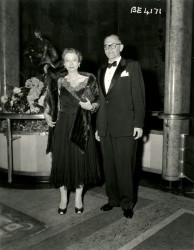 Figure 1. Alberta H. and Henry G. Burke, on a transatlantic voyage (Click here to see a larger version.) |
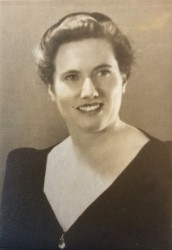 Figure 2. Averil Hassall. Courtesy of the Hassall family |
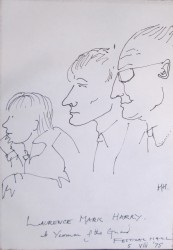 Figure 3. Sketch of Harry Burke, Mark Hassall, and a young family friend, by Mark Hassall (August 1975) |
(The information for each figure is located after the Notes section.)
Alberta and Harry initially encountered Averil by chance while on their first journey to England, in the summer of 1935. Averil effusively recalled the occasion decades later, in a 1988 letter to Harry:
. . . our first meeting in the train, and dearest Alberta saying, when I mentioned “Jane Austen, the English early nineteenth century novelist—perhaps you’ve heard of her”—saying, Yes, that was why they were in England—and turning her expressive eyes on you, at the shared secret of your pilgrimage and her unique researches! One of the luckiest moments in my whole life!3
Averil’s description of Alberta’s “unique researches” is both delightful and accurate. In addition to knowledgeably acquiring rare Austen editions and manuscripts, Alberta sought out every bit of information that connected, however tangentially, to Austen, which she preserved in the scrapbooks that she began filling in 1936.
A significant amount of material in Alberta’s archive, as she called it, illuminates how visual and performing artists, both professional and amateur, responded to Austen in the mid-twentieth century. From their homes in Baltimore and Oxfordshire, respectively, Alberta and Averil indefatigably tracked adaptations of Austen’s novels to the stage, radio, and television. Trained as an artist and art educator, Averil brought a distinctly visual perspective to such adaptations, as we will see from her detailed, insightful responses to a 1944 stage play of Emma and a 1966 dramatization of Pride and Prejudice, as well as from a girls’ school production of Pride and Prejudice that Averil oversaw in her role as art teacher. Throughout Averil’s acquaintance with the Burkes, she taught and lectured about art and art history while looking after her home (the Manor House in Wheatley, a village outside Oxford), her husband, W. O. “Bill” Hassall, assistant librarian in the Department of Western Manuscripts at Oxford’s Bodleian Library, and their four children. Averil’s artistic skill and imaginativeness can be seen in several of the items that she sent to Alberta, especially a handmade book she created as a special gift for Alberta in 1945. Finally, Averil ensured that Alberta’s collection included original contemporary artworks inspired by Austen’s novels, including prints by the prominent illustrator Joan Hassall, a relative of Averil’s through marriage.
Averil reviews Gordon Glennon’s Emma (1945)
Averil’s profound sympathy with Alberta’s capacious approach to collecting is evident in her first extended contribution to her friend’s growing archive: documents concerning a new dramatization of Emma by Gordon Glennon, which premiered at the St. James’s Theatre in London in February and March 1945.4 The relative renown of the playwright and the lead actress can be gauged from the playbill, which credits Glennon (and Austen) in very small black type, while Anna Neagle’s name jumps out in big red type. While a comprehensive history of Austen plays has yet to be written, Glennon’s seems to have been the first ever professional dramatization of Emma, and only the second Austen adaptation to reach the London stage. (Helen Jerome’s successful Pride and Prejudice play was performed in New York in 1935 and in London in 1936.5)
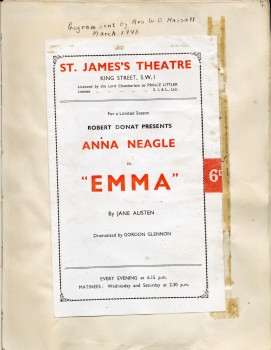 Figure 4. Program for Emma, stage play adapted by Gordon Glennon (1945) |
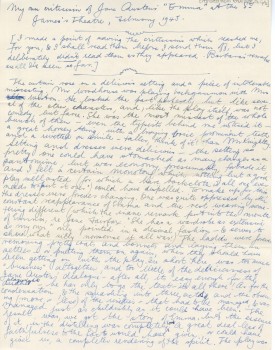 Figure 5. Averil Hassall, “My own criticisms of Jane Austen’s ‘Emma’ at the St James’s Theatre (February 1945)” |
Because World War II prevented Alberta from traveling to London to attend Glennon’s Emma in person, Averil gathered as much information as she could to satisfy her friend’s curiosity. She clipped reviews in the London Times, London Observer, and Times Literary Supplement, as well as a performance photograph published in the Times. The crowning glory of Averil’s dossier was a multi-page handwritten response, which she titled “My own criticisms of Jane Austen’s ‘Emma’ at the St James’s Theatre, February 1945.6
Averil’s overall judgment was that the play “was not comedy but farce,” conveying the basic plot (“story”) of Emma but none of the spirit. Anyone who was not already familiar with Austen’s writing, Averil reflected, would likely be “prejudiced” against it by this stagey, broad, “unconvincing,” “unlifelike” performance. The “deliciousness of Jane Austen’s dialogue” was what Averil wanted to savor, not theatrical “business.” Only Mr. Woodhouse, whose words “were unadulterated Jane, and lovely,” earned her approbation. Longing for the subtlety and complexity of Austen’s characters, she found herself wondering whether “any of them”—presumably including crew as well as cast—had “read the book.”
Regarding the look of the production, Averil commented that Mr. Knightley and Emma “resembled those delightful illustrations by C. E. Brock that I can remember in a friend’s Northanger Abbey when I was a child at school.” She expressed especially strong views on the relative heights of the actors: Mrs. Weston, she exclaimed, was “taller, think of it! than Mr Knightley.”
Averil delivered her amateur critique with complete confidence. She clearly believed that having read and re-read Austen’s novels—being, as she put it to Alberta, “as Jane familiar as we are”—qualified her to render a verdict on the success or failure of any effort to transpose Austen’s novels to a new medium. Alberta’s own strongly opinionated responses to adaptations indicate that she shared this conviction.7
Averil set down her responses to the production without reference to published reviews. In a bracketed headnote, she explained to Alberta that she “made a point of saving the criticisms which reached me, for you, & I shall read them before I send them off, but I deliberately didn’t read them as they appeared.” The professional critics of the London Times and Observer essentially agreed with Averil about which elements of the production were most compelling and which audience members were most likely to be entertained. “The Janeites had better take warning. This adaptation is not for them,” began the unsigned Times review, which continued: “But we are not all Janeites, and this artificial story of a sparklingly cocksure young woman who scarcely deserves the final reward of a man so perceptive as Mr. Knightley is handsomely mounted and charmingly dressed.”8 Bearing out Averil’s prediction that the play would not convert to Austen anyone who did not already admire her work, Ivor Brown opined in the Observer that Glennon constructed “as good a play as can be made out of ‘Emma,’ reserving the right to wonder why anybody should want to make a play of ‘Emma’ at all, since its modest ramble round three marriages is not naturally or easily built into three dramatic scenes or acts.”9 Similarly, the play’s publication occasioned this pithy question in the Times Literary Supplement: “Who, if the novel were available, would prefer the play?”10
A wartime gift: Averil’s handbound Scrutiny article (1944–1945)
Alberta made every effort to keep abreast of critical writings on Austen, purchasing every scholarly book that she saw in an advertisement or catalogue. Because she was not affiliated with a university, however, she had limited access to journal articles. Averil did her best to help supply these, despite the challenges of doing so in the era before searchable databases and cheap photocopying.
A “Special Note” that Averil appended to her review of Glennon’s Emma makes clear how zealously she used her connections to the Bodleian Library and her access to Oxford’s printing services on her friend’s behalf. This account is worth quoting at some length, in order to convey Averil’s engaging voice and her entertaining mode of storytelling—qualities that Alberta termed her “Averility”11:
The other day, Mark [Averil’s middle son, who donated Alberta’s letters to Goucher] had a party in Holywell [a street in central Oxford]—so, whilst he was being festive, I, as his courier, had leave to amuse myself as best I could. . . . [T]he party was on a Thursday—early closing day [for shops] in Oxford, so I gave myself the pleasure of devoting the time to you. I went to the Bodleian and took out the Spring 1944 number of “Scrutiny.” Unfortunately, the Bodleian closes at five—so I didn’t have time to summarise, much less (as I’d half hoped to do) to copy the article, but, see what it is to be the wife of a librarian—I have ordered a photostat of the article for you. I intend it as an Easter gift so, if you are lucky, you may receive it on next New Year’s Day! That was a fortnight ago, and, though I filled in all the suitable forms, and pressed them into the palm of a minion suitably impressed by my familiarity with the great and famous of the establishment (owing of course to exterior social relations via Bill) and equally puzzled by my lack of familiarity with procedure (the fact is, that I have been a reader of the Bodleian—purely in order to be allowed to go past the barrier labeled “readers only” & chat with people—and of the Radcliffe Camera [a reading room of the Bodleian], purely in order to use their lavatory accommodation, for years, but have practically never availed myself of their more obvious facilities)—a minion, I repeat, who swore to consider the charge sacred—but, in spite of all this, there has been, as yet, no reaction on the part of the printer to the university—so I have, I repeat, ordered a photostat which is not the equivalent to having obtained one. I do hope it comes through—there is so little I can do in return for all your generosity to me. (Quaritch [a dealer in rare books], & other places I’ve consulted, offer no hope of getting a back number.)
I read Miss Leavis’ article hastily in 5 minutes or so, and it’s a fortnight or so ago, but as far as I remember the main thesis she developed was this—that Jane Austen did not write simply from experience, but that her letters prove, she rather selected experience and wrote her novels on a deliberately quiet scale. That, living as she did, in the late eighteenth century and the Regency period she was not the Victorian Vicarage prude that loving relatives of the middle nineteenth century liked to imagine her. She tasted life in her own person with the gloves off. . . .12
The article that Averil tracked down, skimmed, ordered for duplication, and ably summarized was the final installment of Q. D. Leavis’s set of three articles, collectively titled “A Critical Theory of Jane Austen’s Writings,” which were published in the journal Scrutiny from the June 1941 to Spring 1944 issues. (D. W. Harding’s influential essay “Regulated Hatred: An Aspect of the Work of Jane Austen” had appeared in the March 1940 issue of Scrutiny.)
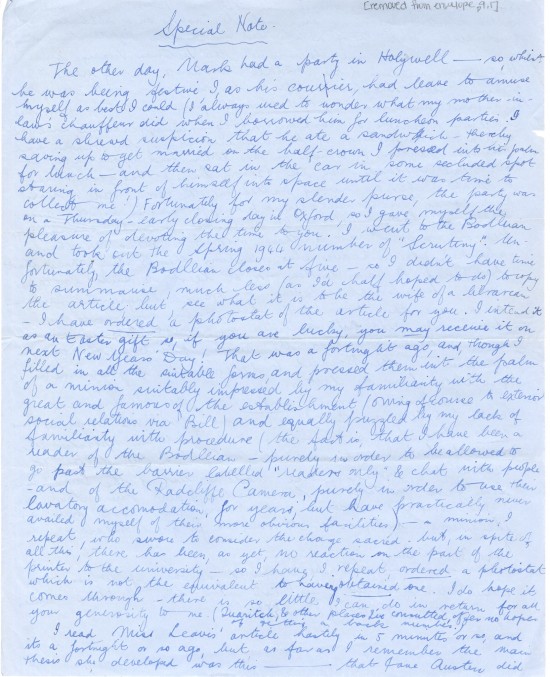
Averil Hassall, “Special Note” (1945)
(Click here to see a larger version.)
A white-on-black photostat of the Leavis article is indeed in Alberta’s collection, in a most unusual form: a handbound book covered in Averil’s own abstract artwork and with a hand-calligraphed title page. As Averil explained in an accompanying postcard, “I’ve just parceled up your unique copy of the Spring number 1944 of the Jane Austen article in Scrutiny. The cover is a wood block print of my own—not surrealism, or symbolism, or any other ism but just what happens when I’ve a tool in my hand, and am trying to see what it will do!”13
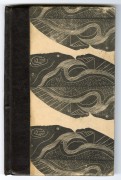 Figure 7. Cover of Averil Hassall’s handbound book containing Scrutiny article (Click here to see a larger version.) |
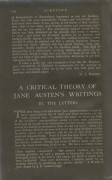 Figure 8. Interior of Averil Hassall’s handbound book (Click here to see a larger version. |
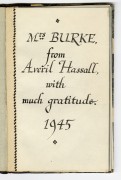 Figure 9. Hand-calligraphed title page of Averil Hassall’s handbound book |
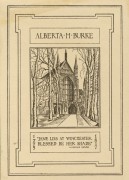 Figure 10. Alberta Burke’s bookplate in Averil Hassall’s handbound book (Click here to see a larger version.) |
A unique copy this is indeed: out of a mundane reproduction, Averil created an art book. Alberta placed her bookplate on the endpaper, as she did in each of the books in her Austen collection.14 Of all the items Averil contributed to Alberta’s archive, none better captures the two women’s shared sensibility as thoughtful readers of Austen outside the scholarly establishment.
Pride and Prejudice at Holton Park School for Girls (1951)
Averil’s certainty that her friend would value any evidence of Austen adaptations, however unprofessional, is evident from her extensive documentation of a version of Pride and Prejudice created and performed in 1951 by her own students at the Holton Park School for Girls.15 As the students’ handwritten program declared, “this whole production is the effort of the entire 4th form, with the assistance of Miss Lucas, Mrs Hassall, and Miss Liotard.” Alberta’s annotation to the program in her scrapbook identifies Averil as having designed the costumes and scenery, which were, respectively, “executed by sewing class” and “painted [by] art class & A.G.H.”: that is, Averil.16
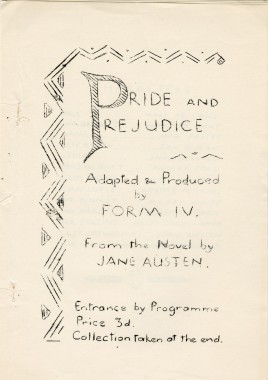 Figure 11. Program for Holton Park School Pride and Prejudice (1951) |
 Figure 12. Script of Holton Park School Pride and Prejudice (1951), copied by Jean Durant |
Averil went to great lengths, and asked one of her students to do so too, in order to furnish Alberta with the script of the production. “I enclose the acting copy of P. and P. written by the girls at Holton (Form IV) themselves,” she wrote triumphantly, explaining that this amalgam of annotated typescript and pages handwritten on lined paper was assembled and hand-copied especially for Alberta by Jean Durant, the student who played Lizzy Bennet. Averil described Jean to Alberta as “tall, slender and intelligent, lives in a little cottage tucked under Chinnor Ridge, and, like most of my girls, is of simple working-class parentage.” Averil’s implication is plain: her students approached Austen’s characters not as social equals but across a class divide.
So that Alberta could appreciate the costumes, scenery, and portrayals, Averil included nineteen black-and-white photographs of the girls, shown in performance as well as posing in costume. Their roles she identified on the back of the prints.17 One striking image of a girl reading under a gigantic tree bears Averil’s caption, “Eliza Bennet under the 1,000 year old oak at Holton Park.” Another, showing the backlit profile of the student playing Mr. Collins, Averil cheerfully explained “gives some idea of Mr Collins’ amazing silhouette!” A sense of the level of the dramatic performances is conveyed by Averil’s note to a photo of the girl portraying Mrs. Bennet, with expansive arm gestures, as “looking rather like the mad wife in Jane Eyre!”
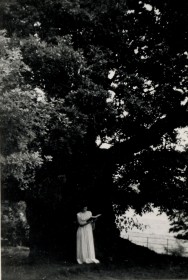 “Eliza Bennet under the 1,000 year old oak at Holton Park.” |
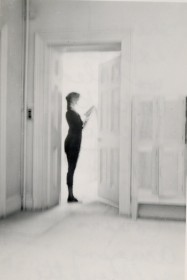 “Mr Collins’ amazing silhouette!” |
 Mrs. Bennet “looking rather like the mad wife in Jane Eyre!” |
As we would expect, Averil’s designs look plausibly Regency. The backdrop for Mrs. Bennet’s drawing room (the location of both scenes of Act I and the second scene of Act II) shows an elegant fireplace and two portraits, while a much grander one for Rosings (Act II, scene 1) depicts elaborate statuary.
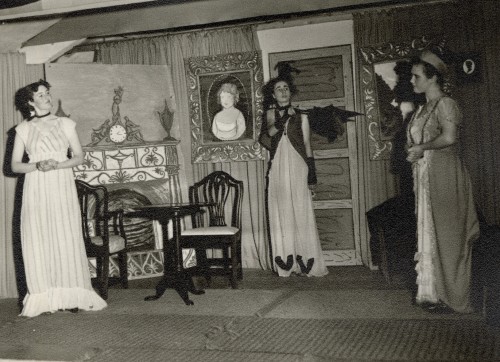
Figure 16. Mrs. Bennet’s drawing room, backdrop designed by Averil Hassall
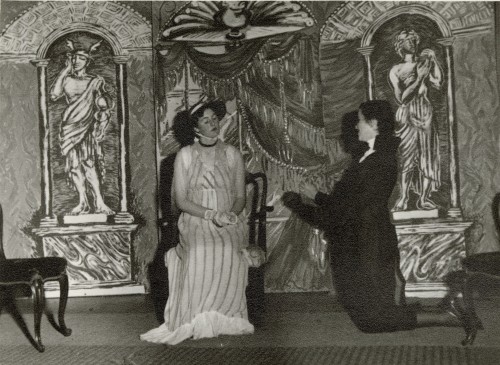
Figure 17. Rosings, backdrop designed by Averil Hassall
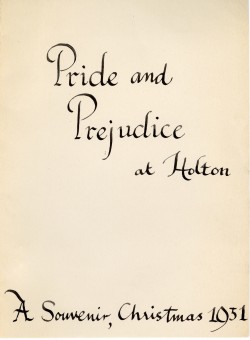
FIgure 18. Averil Hassall’s handmade cover for Pride and Prejudice program
Alberta honored Averil’s efforts and those of her students by treating these materials with as much care as the rest of the ephemera in her collection. She pasted one copy of the program into her scrapbook, with handwritten notes indicating that she had placed the script in her file of “Continuations and Dramatizations” and the photographs in her file of “Background Material.”18 Along with the script, Alberta filed a second copy of the program, for which Averil created a handmade cover that bears, in her beautiful calligraphy, the phrase “A Souvenir, Christmas 1951.”
Averil reviews Liggat and Sheaf’s Pride and Prejudice (1966)
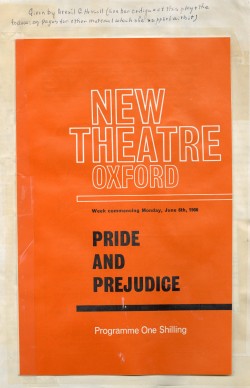
Figure 19. Program for Pride and Prejudice, stage play adapted by James Liggat and Robert Sheaf (1966)
In June 1966, Averil again attended a stage play of an Austen novel and reviewed it in detail for her friend’s benefit: Pride and Prejudice, adapted by James Liggat and Robert Sheaf, presented at the New Theatre in Oxford. Pointing out the omission of many supporting characters, Averil judged this version to be “economy size JA.”19 These changes bothered her less, however, than pervasive romanticization that included “lots of kissing” between Jane Bennet and Mr. Bingley.
Criticizing the casting led Averil to explain her own conceptions of Austen’s characters, in terms of both physique and personality. As Mr. Bingley, Tony Russell seemed to Averil “not enough of the good looking lightweight,” and she especially disliked that both he and the actor playing Mr. Collins were much taller than “little Darcy.” The figure and costuming of Joan Haythorne as Lady Catherine surprised Averil and prompted her to reconsider how she visualized this character: “I always see her as tall & fat, but this may be my picture—she was very thin. And there was something odd about her dressing—thin, tall women’s clothes—I know!—she didn’t look like lap-dogs! but like somebody who’d ridden to hounds. Perhaps she had! I shall have to re-think her!” Averil’s strongest objection was to the impressions created by Susan Jameson and Petra Davies as Jane and Elizabeth Bennet, respectively:
I have a very fixed image of Jane. She ought to look like a fashion plate of the Directoire period—a large series of placid, smooth shapes—arms (raised, heavily, in attitudes) legs—very cylindrical—do you know what I mean? The sort of thing Joséphine might have been—but lacking the animation & invention of a young Emma Hamilton. In short, I see Jane as the perfect beauty of the period—but to be the beauty-fashion of the moment is always a happy accident—a chance—& this is what kept Jane humble. She knew herself just a nice, ordinary girl, who happened to fit all her period’s stock sizes. This Jane was eager, romantic, above all thin—She had the animation that should have gone to Lizzie. Elizabeth was exquisitely lovely—a smooth girl, with a sort of spiritual stillness—a camellia skin: but the real Lizzie was less spiritual than spirituelle—spirited—quite a different thing. It was Jane who was all repose in the book—they should have played each other’s parts!
From a visceral response to the appearance of two actresses, Averil developed an insightful analysis of the Bennet sisters, especially Jane, an ideal beauty who is self-aware enough not to become conceited.
Reminiscent of her objections to Glennon’s 1945 Emma, Averil stressed too how inadequately the Liggat/Sheaf adaptation conveyed the qualities she most valued in Austen’s writing. “What was left out,” she lamented,
was the subtlety. Yes, I know they always say that if they don’t follow closely to a favourite author it doesn’t matter—that isn’t the point of the piece—but, if so, why choose P&P? It makes an indifferent play—they might just as well choose a theme of their own. Well—I do know why—really—the thin audience, (so many bald heads) was only drawn by JA’s name to it, to coming to the theatre at all. . . . Only I should think everyone would go home raging, if they really love JA. The English teacher at school says she’s heard some quite good crits of it—so perhaps I am being over-fastidious. Still—since the great gift of JA to the world is subtle humour & character it does seem a pity if the humour consists of over-playing Mr Bennet, & getting most of the characters all wrong.
Professional reviewers of Liggat and Sheaf’s Pride and Prejudice, by contrast, were significantly more appreciative than Averil. The critic of the Sunday Times, for instance, judged the play to be “neat, stage-worthy, and reliably cast. . . . Even those who know the book backwards should find things to enjoy in the production; though one must add that it is most likely to appeal to the more soft-hearted Janeites.”20
Averil’s final gift: Joan Hassall’s illustrations
After Alberta’s death in May 1975, Averil continued writing to Harry and sending Austen material to add to the collection, the great majority of which Alberta bequeathed to Goucher, her alma mater. Poignantly, Averil told Harry that she found it to be “essential therapy . . . to be doing something for Alberta—I’m quite happy should it be completely anonymous.”21
Chief among Averil’s acquisitions during these years was a set of six prints of illustrations to Austen’s novels by the noted engraver Joan Hassall (1906–1988), a cousin of Averil’s husband Bill. Averil recalled Alberta mentioning how much she appreciated the “style & elegance and non-mawkish period identification” of Joan Hassall’s illustrations for the Folio Society’s edition of Austen, published from 1957 to 1963.22 In a letter accompanying the prints, Averil told Harry that she and Alberta
often used to talk about whether any material were available from Joan: I was, stupidly, afraid to bother Joan (she can be ruthless with people who interrupt her work: and Alberta, typically, was too modest). But I made myself write when there was little left to do for Alberta and, to my delight, Joan wrote back to say that she sells signed prints as a routine thing. I could have kicked myself for not giving Alberta this pleasure whilst she was still with us to enjoy them.23
Included with Averil’s gift is an undated card to her from Joan, which reads, “Here are six prints and I hope your American friend will like them.”24
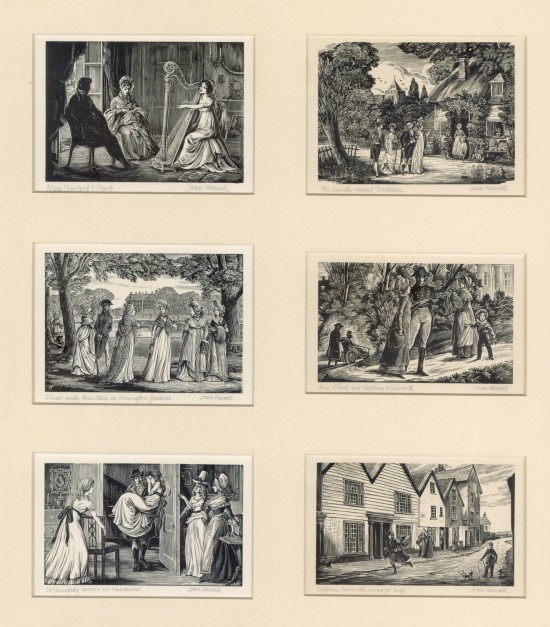
Figure 20. Signed prints of illustrations by Joan Hassall: “Miss Crawford’s Harp,” “The saunter round Woodston,” “Elinor meets Miss Steele in Kensington Gardens,” “Ann [sic] Elliot and Captain Wentworth,” “Willoughby carries in Marianne,” “Captain Benwick runs for help.”
(Click here to see a larger version.)
Following Alberta’s death, Averil paid tribute to her in a letter sent with a donation in her friend’s memory to the Jane Austen Memorial Trust. She wrote,
I first met Mrs Burke some forty years ago—in a railway carriage!—when she was travelling through England with her husband visiting places linked with Jane Austen, in a common love for whom our long and happy friendship was cemented. A most meticulous scholar, often consulted by other researchers, whose names were more prominently before the public eye, Mrs Burke could never be persuaded to publish the results of her lifelong study of Miss Austen, but was generous and helpful beyond praise to those who did. Mrs Burke had an unqualified [that is, absolute] knowledge of her heroine’s life and times, which alas died with her. A perfectionist and a wit, a connoisseur of art, theatre and of the ballet, a friend without equal, Alberta Burke was of a shy and retiring nature—but there will be other members of the [Jane Austen] Society who, remembering her, will share my grief at her loss.25
With characteristic modesty, Averil omitted any mention of her own extensive support of Alberta’s collecting.
In one sense, of course, Alberta’s unparalleled knowledge did not die with her. She inscribed it in her archive: in letters, in the margins of her books, and in the annotations to her scrapbooks. Her research on Austen was a passion project and a labor of love. Or, we might say, in order properly to acknowledge Averil’s contributions for the first time, a labor of love and friendship.
NOTES
1Along with J. David Grey and Joan Austen-Leigh, Henry Burke co-founded JASNA in 1979; see Wells, Everybody's Jane, chapter 7. For an overview of Alberta’s Austen collecting, see Wells, Everybody’s Jane, chapter 3. On Alberta’s self-taught expertise in Austen bibliography (book history), see Wells, Reading Austen in America, chapter 5.
2I am thankful to Mark Hassall for his donation and also for his warm encouragement of my writing about his mother. I gratefully acknowledge the support of a Provost’s Summer Grant for Faculty/Student Collaborative Research in the Humanities, which, in summer 2018, allowed me to work with Allie Bowerman (Goucher class of 2019) to read, transcribe, annotate, and reflect on the newly acquired correspondence.
3Averil Hassall to Henry Burke, 11 August 1988, Alberta H. and Henry G. Burke papers and Jane Austen research collection, MS 0020/I/3/47, Special Collections and Archives, Goucher College, Baltimore, Maryland. For the sake of readability, in transcribing Alberta’s and Averil’s manuscripts I have silently emended minor errors and inconsistencies in spelling and punctuation. Characters’ names and novel titles appear as written (or abbreviated) by Alberta and Averil.
4Scrapbook III, MS 0020/II/8/6.
5See Looser, “The Cult of Pride and Prejudice and Its Author” (180). On dramatizations of Austen more generally, see Looser, The Making of Jane Austen, Part II.
6Scrapbook III removals, MS 0020/II/8/7. Subsequent quotations are from this source.
7In Everybody’s Jane, I quoted a representative response of Alberta’s to a 1941 radio broadcast based on Pride and Prejudice, which she dismissed as a “thoroughly unsatisfactory and bastardized version!” (47).
8London Times, 8 February 1945, Scrapbook III, MS 0020/II/8/6.
9Ivor Brown, “Theatre and Life,” Observer (London), 11 February 1945, Scrapbook III, MS 0020/II/8/6.
10Times Literary Supplement, 26 May 1945, Scrapbook III, MS 0020/II/8/6.
11Alberta H. Burke to Averil Hassall, 6 February 1962, Averil Hassall collection, MS 0053, Burke-Hassall correspondence, Jan. – June 1962.
12Averil Hassall to Alberta H. Burke, February 1945, MS 0020/II/8/7.
13Averil Hassall to Alberta H. Burke, 27 March 1945, MS 0020/5/41.
14On the design of Alberta’s bookplate, see Wells, Everybody’s Jane (58).
15Although located on a country estate, Holton Park School was public, in the American sense of the term. On the history of the Holton Park School, see Chipperfield.
16“Pride and Prejudice at Holton,” MS 0020/II/8/10.
17Six of the photographs are approximately 4”x6”, matte finish, and appear to be official photographs of the production and cast; the other thirteen are glossy snapshots, approximately 2”x3”.
19Scrapbook VIII removals, MS 0020/II/10/18. Subsequent quotations are from this source.
20“Neat adaptation of Austen work,” Sunday Times (London), 19 June 1966, 7, Scrapbook VIII, MS 0020/II/10/17.
21Averil Hassall to Henry G. Burke, 20 January 1976, MS 0020/I/2/41.
22Alberta H. Burke to Averil Hassall, 30 August 1960, MS 0053, Burke-Hassall correspondence, Jan. – Aug. 1960. See also Joan Hassall, “Illustrating Jane Austen.
23Averil Hassall to Henry G. Burke, 5 May 1976, MS 0020/I/2/41.
24Joan Hassall to Averil Hassall, n.d. [1976], MS 0020/I/2/41.
25I am grateful to Mark Hassall for sharing this letter with me.
IMAGES
- Figure 1. Alberta H. and Henry G. Burke, on a transatlantic voyage. Courtesy Goucher College Special Collections & Archives.
- Figure 2. Averil Hassall. Courtesy of the Hassall family.
- Figure 3. Sketch of Harry Burke, Mark Hassall, and a young family friend, by Mark Hassall, August 1975. Courtesy Goucher College Special Collections & Archives.
- Figure 4. Program for Emma, stage play adapted by Gordon Glennon, 1945. Courtesy Goucher College Special Collections & Archives.
- Figure 5. Averil Hassall, “My own criticisms of Jane Austen’s ‘Emma’ at the St James’s Theatre, February 1945.” Courtesy Goucher College Special Collections & Archives.
- Figure 6. Averil Hassall, “Special Note,” 1945. Courtesy Goucher College Special Collections & Archives.
- Figure 7. Cover of Averil Hassall’s handbound book containing Scrutiny article. Courtesy Goucher College Special Collections & Archives.
- Figure 8. Interior of Averil Hassall’s handbound book. Courtesy Goucher College Special Collections & Archives.
- Figure 9. Hand-calligraphed title page of Averil Hassall’s handbound book. Courtesy Goucher College Special Collections & Archives.
- Figure 10. Alberta Burke’s bookplate in Averil Hassall’s handbound book. Courtesy Goucher College Special Collections & Archives.
- Figure 11. Program for Holton Park School Pride and Prejudice, 1951. Courtesy Goucher College Special Collections & Archives.
- Figure 12. Script of Holton Park School Pride and Prejudice, 1951, copied by Jean Durant. Courtesy Goucher College Special Collections & Archives.
- Figure 13. “Eliza Bennet under the 1,000 year old oak at Holton Park.” Courtesy Goucher College Special Collections & Archives.
- Figure 14. “Mr Collins’ amazing silhouette!” Courtesy Goucher College Special Collections & Archives.
- Figure 15. Mrs. Bennet “looking rather like the mad wife in Jane Eyre!” Courtesy Goucher College Special Collections & Archives.
- Figure 16. Mrs. Bennet’s drawing room, backdrop designed by Averil Hassall. Courtesy Goucher College Special Collections & Archives.
- Figure 17. Rosings, backdrop designed by Averil Hassall. Courtesy Goucher College Special Collections & Archives.
- Figure 18. Averil Hassall’s handmade cover for Pride and Prejudice program. Courtesy Goucher College Special Collections & Archives.
- Figure 19. Program for Pride and Prejudice, stage play adapted by James Liggat and Robert Sheaf, 1966. Courtesy Goucher College Special Collections & Archives.
- Figure 20. Signed prints of illustrations by Joan Hassall: “Miss Crawford’s Harp,” “The saunter round Woodston,” “Elinor meets Miss Steele in Kensington Gardens,” “Ann [sic] Elliot and Captain Wentworth,” “Willoughby carries in Marianne,” “Captain Benwick runs for help.” Courtesy Goucher College Special Collections & Archives.
